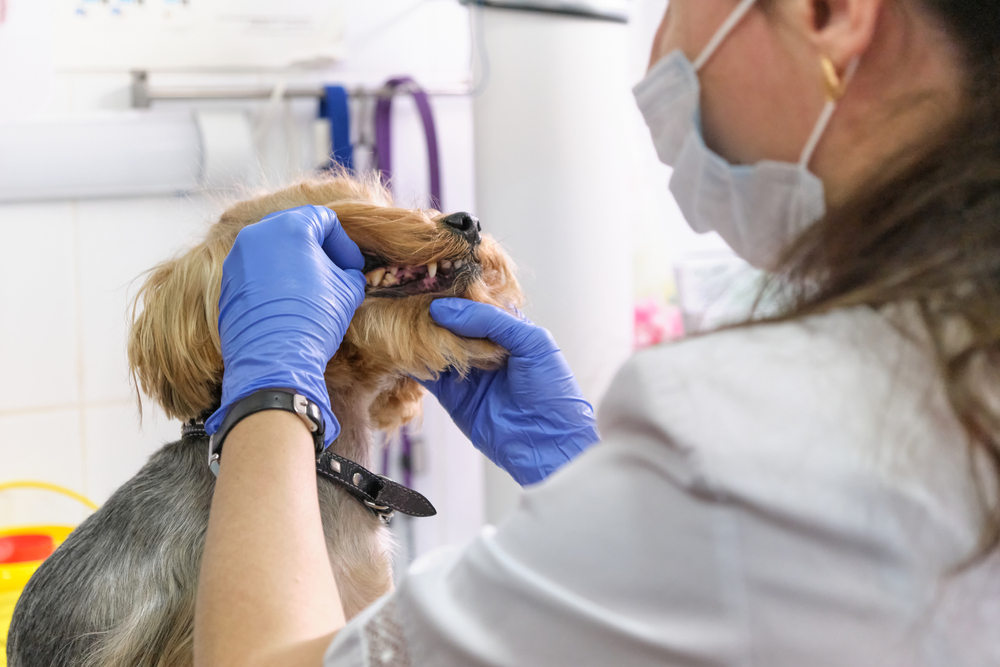Dental health is paramount, not just for us humans but for our beloved pets too. While it’s easy to notice our own dental discomfort, the silent suffering of our pets often goes unnoticed. However, when symptoms manifest visibly, the condition may have progressed substantially. At Happy Tails Animal Hospital in Renton, WA, we prioritize proactive dental care and believe it’s essential to educate pet owners on when and why dental extractions might be necessary.
Understanding Dental Extractions: In the simplest terms, a dental extraction is the removal of a tooth due to disease or injury. For pets, these extractions are conducted under anesthesia, ensuring a pain-free experience.
1. Advanced Periodontal Disease: Periodontal disease, commonly known as gum disease, starts off as a seemingly harmless plaque buildup on your pet’s teeth. However, over time, this plaque can harden into tartar, leading to inflammation and potential infections in the gums. When this ailment progresses, it doesn’t just affect the superficial gum layer but penetrates deeper, targeting the supporting structures of the teeth, including the bone. Advanced periodontal disease manifests as deep periodontal pockets, receding gums, severe bone loss, and pus formation around the teeth. These symptoms can make eating a painful experience for pets and lead to systemic infections if bacteria enter the bloodstream. Extraction of the affected teeth becomes necessary to halt the spread of the disease, relieve pain, and prevent further complications like organ damage from bacterial dissemination.
2. Fractured Teeth: Pets, especially dogs, have a knack for chewing on hard objects, which can lead to fractured teeth. Depending on the break’s severity, and if the pulp (tooth’s innermost part) is exposed, extractions can prevent ongoing pain and potential infections.
3. Retained Deciduous Teeth: Baby teeth, or deciduous teeth, in pets are meant to fall out as they mature, making way for their permanent adult teeth. However, in some instances, these baby teeth don’t shed as they should, leading to a situation where both the baby tooth and the emerging adult tooth try to occupy the same space. This crowding can result in misaligned teeth, which can trap food particles and debris, creating a breeding ground for bacteria and increasing the risk of periodontal disease. Moreover, the pressure from retained deciduous teeth can distort the proper alignment of the adult teeth, potentially impacting the pet’s bite and leading to other dental issues. Extracting these stubborn baby teeth allows the adult teeth to grow in their correct position and prevents the cascade of dental problems that retained teeth can initiate.
4. Root Abscesses: An abscess is a pocket of pus resulting from bacterial infections. If located at the tooth’s root, it can cause significant discomfort and swelling. Extracting the affected tooth often brings immediate relief.
5. Oral Tumors: Oral masses or tumors in pets can range from benign growths to aggressive malignant cancers. Any unusual lump or bump in your pet’s mouth warrants a thorough examination. If a tumor grows around a tooth, is attached to the gingival tissue, or is near multiple teeth, extractions might be deemed necessary. In some cases, extracting the tooth can provide better access to remove the tumor entirely. In other scenarios, the extraction might be necessary to obtain a tissue sample for biopsy, which helps determine the nature of the tumor – benign or malignant. Early detection and intervention are vital. Some oral tumors can be aggressive, and timely treatment can significantly influence outcomes. Additional treatments like chemotherapy or radiation might be recommended post-extraction depending on the tumor’s nature.
6. Malocclusion: Sometimes, due to genetics or trauma, teeth don’t align properly. This malocclusion can lead to injuries in the mouth or difficulty eating. Strategically extracting certain teeth can resolve the problem.
Why Opt for Dental Extractions? The primary reason is alleviating pain and discomfort. Our pets might not vocalize their distress, but chronic dental issues can significantly affect their quality of life. Furthermore, dental problems can lead to systemic issues. Bacteria from a decayed tooth can enter the bloodstream, potentially impacting vital organs like the heart and kidneys.
Additionally, extractions can prevent the spread of infections, halt the progression of dental disease, and reduce the risk of complications in the future. It’s about ensuring a happier, healthier life for our pets.
Post-Extraction Care: After an extraction, it’s imperative to follow the post-op care guidelines provided by the veterinarian. This includes monitoring the extraction site, adhering to a soft diet, and administering prescribed medications. Regular check-ups post-surgery will ensure the mouth is healing well, and there are no complications.
Protect Their Smile with Us!
Your pet’s dental health shouldn’t be an afterthought. Regular dental check-ups can prevent the need for extractions in the first place. If your furry friend hasn’t had their teeth examined lately, or you suspect dental issues, don’t wait. Contact Dr. Arshdeep Mann at Happy Tails Animal Hospital in Renton, WA, today at (425) 254-2779. Together, let’s ensure your pet sports a healthy, pain-free smile for years to come!
Sources
- American Veterinary Dental College. “Periodontal Disease in Pets.”
- Veterinary Oral Health Council. “Fractured Teeth and Treatments.”
- Journal of Veterinary Dentistry. “Management of Retained Deciduous Teeth.”






